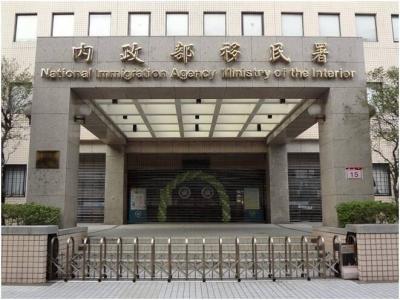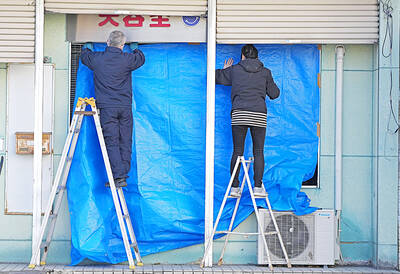The military has prepared countermeasures should China attempt to blockade Taiwan, an action that would devastate the world economy and that the international community would be unlikely to ignore, Minister of National Defense Wellington Koo (顧立雄) said yesterday.
Koo was responding to a question for comment about a Wall Street Journal report published on Sunday that said “China’s armed forces are more ready than ever to surround Taiwan, cut it off from the world and try to squeeze it into submission.”
The report also said how the blockade would be carried out was evident in the military exercises the Chinese People’s Liberation Army has held around Taiwan.

Photo: Tu Chien-jung, Taipei Times
The military has simulated all possible military actions the enemy might take, including those indicated in US military studies, Koo told reporters on the sidelines of a legislative session.
“The military’s first and foremost task is to prepare for the possibility of war. Taiwan has never underestimated the threat from China and has prepared countermeasures against it,” he said.
Koo said he wanted to remind Beijing about the serious consequences to the global economy if China launches a blockade of Taiwan.
“More than 50 percent of global trade passes through the Indo-Pacific region, and a blockade of Taiwan would have a tremendous impact on global prosperity and stability. It is unlikely that the international community would ignore such a move from China,” Koo said.
“Facing the threat from China, we need to bolster our self-defense capabilities and work with our allies to deter such a move,” he added.
A possible blockade of Taiwan was discussed yesterday morning by experts in a forum organized by the Vision Foundation.
The forum was held to review the Quadrennial Defense Review published last week by the Ministry of National Defense, which provides a general overview of the nation’s defense policy over the next four years.
Former US Department of Defense senior director for China, Taiwan and Mongolia Tony Hu (胡振東) said he agrees with US Indo-Pacific Commander Admiral Samual Paparo’s statement that the US can break any blockade.
A potential blockade of Taiwan would be of great concern to the US and could prompt it to take military action, Hu said.
Once a cross-strait conflict begins, China would have to win it before the arrival of US troops and those of allies, and dominate the situation, he said.
“There is only one way for China to launch a successful invasion of Taiwan: The fifth column that China has planted in Taiwan creates internal chaos, destroys the infrastructure here, kills Taiwanese leaders and forces a government official to represent Taiwan and surrender. If the situation happens, the US military would not be able to intervene,” Hu said, adding that other Chinese strategies would have a very low chance of success.
US intelligence operatives would also have information on China’s potential moves if it sought to launch a fast war, he said.
Rather than focusing on harassment by Chinese military aircraft and vessels around the Taiwan Strait, which only aims to intimidate Taiwanese, the nation should concentrate on shoring up its self-defense capabilities by increasing military spending and procuring the right weapons to deter China, he said.
Buying defensive weapons — such as air defense systems, drones and torpedoes — would be far less expensive than the cost of wars and post-war reconstruction, Hu said.
He also called for Taiwan to participate as an observer in next year’s Rim of the Pacific exercises, the world’s largest international maritime warfare exercise.
Taiwan should aim to fully participate in the exercise by 2028, he said, adding that the nation’s presence at such an important military exercise should be supported by more allies now that the situation has changed.
Taiwan should seek approval from the Pentagon and the US Department of State to enter the exercises, as well as support from the US Indo-Pacific Command, he said.
Another way to bolster Taiwan’s capabilities in a joint operation is to practice using data and radio communication systems as well as sharing information when US Navy ships operate close to Taiwan, Hu said.

A small number of Taiwanese this year lost their citizenship rights after traveling in China and obtaining a one-time Chinese passport to cross the border into Russia, a source said today. The people signed up through Chinese travel agencies for tours of neighboring Russia with companies claiming they could obtain Russian visas and fast-track border clearance, the source said on condition of anonymity. The travelers were actually issued one-time-use Chinese passports, they said. Taiwanese are prohibited from holding a Chinese passport or household registration. If found to have a Chinese ID, they may lose their resident status under Article 9-1

Taiwanese were praised for their composure after a video filmed by Taiwanese tourists capturing the moment a magnitude 7.5 earthquake struck Japan’s Aomori Prefecture went viral on social media. The video shows a hotel room shaking violently amid Monday’s quake, with objects falling to the ground. Two Taiwanese began filming with their mobile phones, while two others held the sides of a TV to prevent it from falling. When the shaking stopped, the pair calmly took down the TV and laid it flat on a tatami mat, the video shows. The video also captured the group talking about the safety of their companions bathing

A classified Pentagon-produced, multiyear assessment — the Overmatch brief — highlighted unreported Chinese capabilities to destroy US military assets and identified US supply chain choke points, painting a disturbing picture of waning US military might, a New York Times editorial published on Monday said. US Secretary of Defense Pete Hegseth’s comments in November last year that “we lose every time” in Pentagon-conducted war games pitting the US against China further highlighted the uncertainty about the US’ capability to intervene in the event of a Chinese invasion of Taiwan. “It shows the Pentagon’s overreliance on expensive, vulnerable weapons as adversaries field cheap, technologically

Starting on Jan. 1, YouBike riders must have insurance to use the service, and a six-month trial of NT$5 coupons under certain conditions would be implemented to balance bike shortages, a joint statement from transportation departments across Taipei, New Taipei City and Taoyuan announced yesterday. The rental bike system operator said that coupons would be offered to riders to rent bikes from full stations, for riders who take out an electric-assisted bike from a full station, and for riders who return a bike to an empty station. All riders with YouBike accounts are automatically eligible for the program, and each membership account